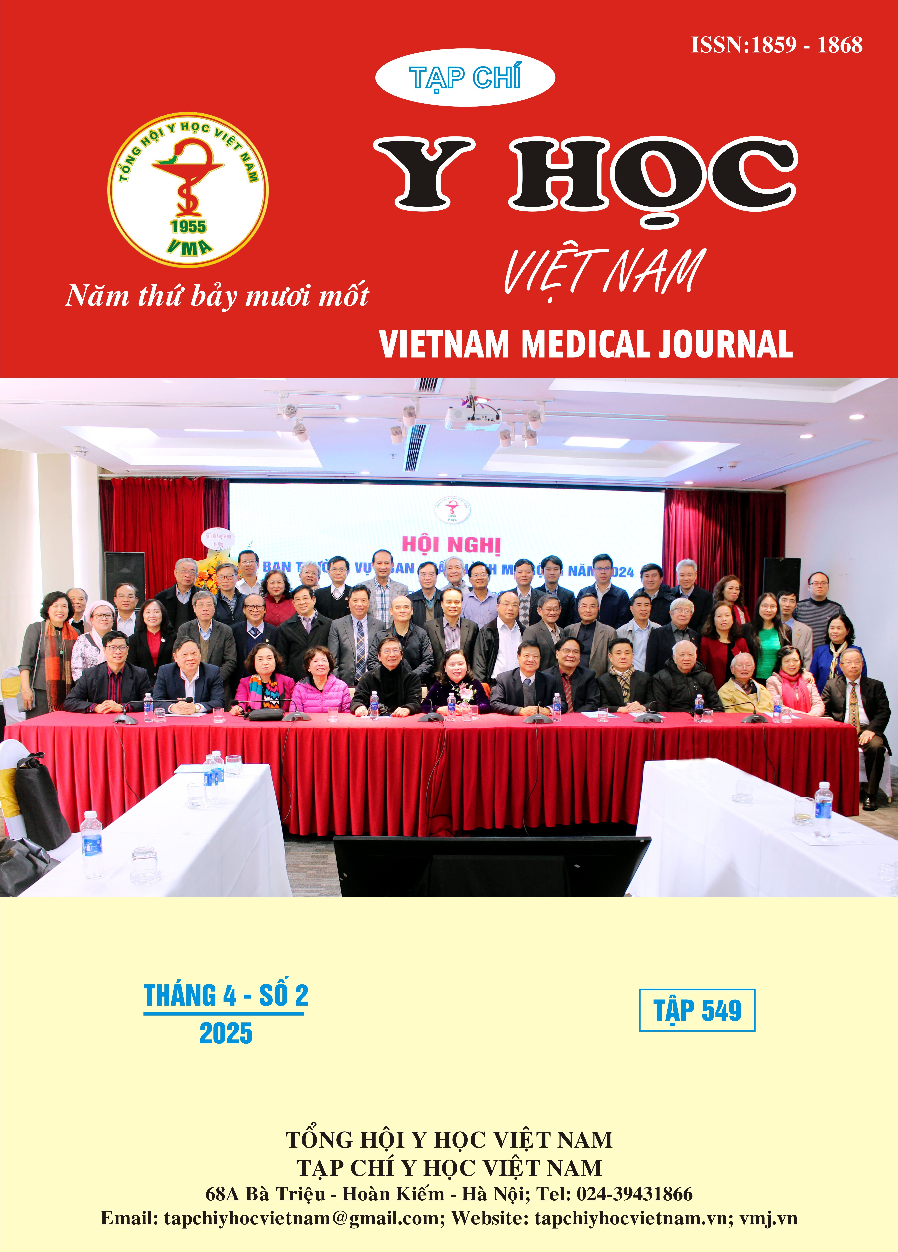KẾT QUẢ ĐIỀU TRỊ TIÊU CHẢY KÉO DÀI Ở TRẺ 6-24 THÁNG TẠI KHOA TIÊU HÓA BỆNH VIỆN NHI TRUNG ƯƠNG
Nội dung chính của bài viết
Tóm tắt
Tiêu chảy kéo dài là một đợt tiêu chảy khởi đầu cấp tính và kéo dài 8-13 ngày gây ảnh hướng đến tình trạng hấp thu nước, điện giải và dinh dưỡng của trẻ. Mục tiêu nghiên cứu: Nhận xét kết quả điều trị tiêu chảy kéo dài ở trẻ 6 - 24 tháng tuổi tại khoa Tiêu hoá, Bệnh viện Nhi Trung ương. Đối tượng và phương pháp nghiên cứu: Nghiên cứu tiến cứu mô tả loạt ca bệnh trên 79 trẻ từ 6- 24 tháng tuổi được chẩn đoán tiêu chảy kéo dài tại Bệnh viện Nhi Trung ương từ 01/07/2023 - 30/06/2024. Kết quả: Tuổi trung bình của trẻ là 10,2 ± 4,2 tháng. Tỷ lệ trẻ trai/gái là 1,8/1. 100% trẻ được sử dụng kháng sinh và bù nước điện giải đường uống, 30,4% trẻ được bù nước điện giải theo phác đồ B. Tỷ lệ trẻ được bổ sung probiotic và kẽm lần lượt là 97,5% và 45,6%. Kháng sinh lựa chọn ban đầu cho trẻ là cefixim (58,2%) và azithromycin (32,9%). Sau 3 ngày, 69,7% trẻ được chuyển kháng sinh từ đường uống sang đường tiêm tĩnh mạch chậm. 48,1% được tiêm ceftriaxone sau liệu pháp đường uống thất bại. 16,5% được phối hợp 2 kháng sinh là ceftriaxone và metronidazole. Thời gian điều trị trung bình là 6,9 ± 2,7 ngày. Ở thời điểm ra viện, các triệu chứng sốt, nôn, tiêu chảy và tình trạng mất nước cải thiện rõ rệt, xét nghiệm phân trở về bình thường. Tỷ lệ trẻ còn tình trạng biếng ăn và viêm hậu môn còn cao và lần lượt là 50,6% và 63,3%. Kết luận: Tiêu chảy kéo dài nhiễm khuẩn là vấn đề thường gặp ở trẻ em đòi hỏi phải phối hợp nhiều biện pháp điều trị trong đó sử dụng kháng sinh hợp lý, bù nước - điện giải, bổ sung kẽm và probiotic là các biện pháp điều trị quan trọng.
Chi tiết bài viết
Từ khóa
Tiêu chảy kéo dài, nhiễm khuẩn, trẻ em, điều trị, kháng sinh
Tài liệu tham khảo
2. Andrade JAB de, Fagundes-Neto U. Persistent diarrhea: still an important challenge for the pediatrician. J Pediatr (Rio J). 2011;87(3):199-205. doi:10.2223/JPED.2087
3. Lo Vecchio, Andrea MD, PhD*,†; Conelli, Maria Laura MD*,†; Guarino, Alfredo MD*,†. Infections and Chronic Diarrhea in Children. The Pediatric Infectious Disease Journal 40(7):p e255-e258, July 2021. | DOI: 10.1097/ INF.0000000000003182
4. Giannattasio A, Guarino A, Lo Vecchio A. Management of children with prolonged diarrhea. F1000Res. 2016;5:F1000 Faculty Rev-206. doi:10.12688/f1000research.7469.1
5. Nguyễn Thanh Tâm, Bùi Thị Ngọc Ánh, Nguyễn Thị Việt Hà. Đánh giá một số yếu tố nguy cơ của tiêu chảy kéo dài nhiễm khuẩn ở trẻ em 6- 24 tháng tuổi tại Bệnh viện Nhi Trung ương. Tạp chí Y học thực hành. 2017;(8):87-90.
6. Rahmat D, Firmansyah A, Timan IS, et al. Risk factors of prolonged diarrhea in children under 2 years old. Clin Exp Pediatr. 2023;66(12):538-544. doi:10.3345/cep.2023.00668
7. Nguyễn Thị Thanh Huyền, Nguyễn Thị Việt Hà. Nghiên cứu đặc điểm lâm sàng, cận lâm sàng bệnh tiêu chảy kéo dài ở trẻ em dưới 5 tuổi tại bệnh viện Nhi Trung Ương. Tạp chí Nhi khoa. 2011;4:245-251.
8. Hossain MI, Faruque ASG, Sarmin M, et al. Prolonged diarrhea among under-five children in Bangladesh: Burden and risk factors. PLoS One. 2022;17(10): e0273148. doi:10.1371/journal. pone.0273148
9. Nguyễn Hoàng Yến, Nguyễn Thị Việt Hà. Nghiên cứu đặc điểm lâm sàng và cận lâm sàng bệnh tiêu chảy kéo dài ở trẻ dưới 6 tháng tuổi tại bệnh viện Nhi trung ương. Tạp chí Nhi khoa. 2013;(3):124-126
10. Nguyễn Thị Mai Hương, Nguyễn Thị Việt Hà. Đặc điểm lâm sàng, cận lâm sàng tiêu chảy cấp phân máu trẻ em tại Bệnh viện đa khoa Đức Giang. Tạp chí Y học Việt Nam. 2021;(1):154-157.


